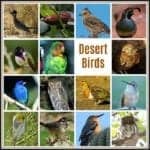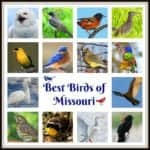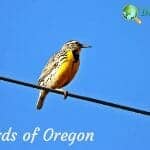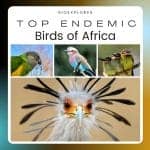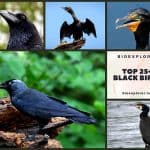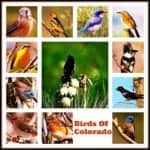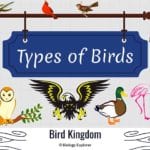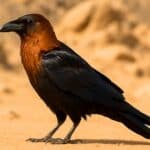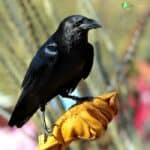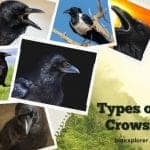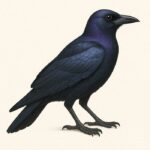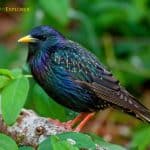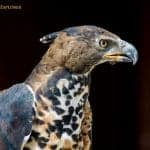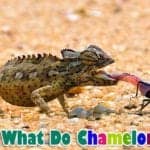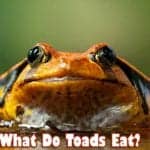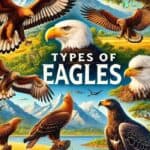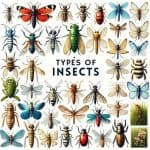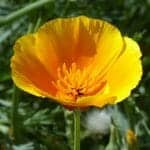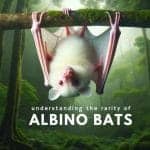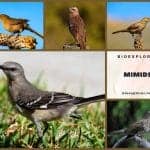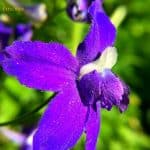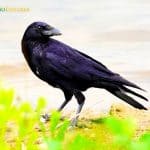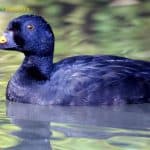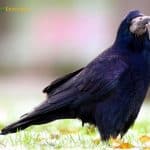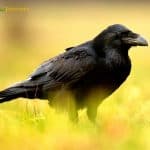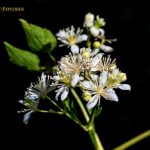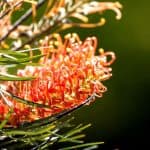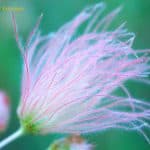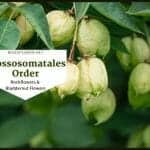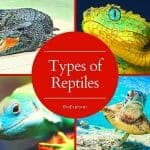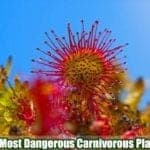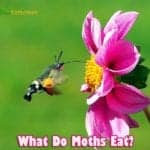desert bird - search results
If you're not happy with the results, please do another search
Explore Desert Birds & Their Adaptations
A desert is a barren landscape area with little to no water (no precipitation) found which makes the living condition extremely hostile for plants and animals. Explore 15 different types of desert birds and their adaptations on this page.
Top 15 Mexican Birds (Spectacular Species You Must Know)
Discover the top 15 Mexican birds, from vibrant quetzals to rare doves. Learn where to find Mexico’s most colorful and unique bird species across forests, coasts, and mountains.
Top 15 BEST Birds of Missouri
Here are the top 15 birds of Missouri and their fascinating fun facts along with where can one spot each of them in the State of Missouri.
Top 10 Birds of Oregon
Oregon is notable for its diverse habitats, including alpine meadows, rainforests, pine forests and more. Find top 10 birds of Oregon including its state bird (Western Meadowlark).
Top 25 Rare Birds of All Time
Explore the 25 rare birds in the world, including the Kakapo and Philippine Eagle, with stunning visuals, unique facts, and their incredible rare bird habitats.
Birds of Africa
Birds of Africa: Home to over 2,000 bird species, the African continent boasts some of the most spectacular avian diversity on Earth. From tiny sunbirds to massive ostrich, dazzling birds occupy every habitat across Africa's vast landscapes. Explore the top African birds here.
Black Birds
Discover the top 30+ black birds' mesmerizing beauty, unique behaviors, and fascinating facts. Dive into a symphony of wings and feathers as we explore these captivating dark birds shedding light on their mysterious allure.
The Ultimate Guide to 25+ Spectacular Desert Flowers & Their Unique Adaptations
Desert Flowers: Approximately 1/3 of the earth's surface is deserts. Despite having prolonged periods without precipitation, severe temperature ranges, dry winds, and low humidity, the beautiful blooms of the desert have learned to survive the harsh environment and continue to bloom and provide colors to the desert.
15 Amazing Birds of Colorado
The state of Colorado has a wide range of potential bird habitats. Explore the top 15 amazing birds of Colorado and their interesting facts here.
40 Different Types of Birds
Birds are some of the most successful vertebrate animals on Earth. Explore different types of birds, their characteristics, and 40 orders of bird families.
Brown-necked Raven
The brown-necked raven (Corvus ruficollis) is a clever, desert-adapted corvid found across North Africa, the Middle East, and parts of Asia. Recognized by its glossy black body and brown-tinged neck, this bird thrives in arid habitats, from rocky outcrops to human-altered landscapes. An opportunistic omnivore, it feeds on insects, carrion, fruit, and even trash. Known for its intelligence, aerial acrobatics, and cooperative behavior, the raven plays a crucial ecological role as a scavenger and predator. Its adaptability ensures resilience amid shifting environmental conditions.
Chihuahuan Raven
The Chihuahuan raven (Corvus cryptoleucus) is an intelligent desert-dwelling bird found in the southwestern U.S. and Mexico. Slightly smaller than the common raven, it features all-black plumage and hidden white neck feathers. Adapted to arid grasslands and scrub, it thrives as both a predator and scavenger. Known for its deep "kraaa" call and playful flight displays, this raven plays a vital ecological role and demonstrates impressive social behavior and adaptability in harsh environments.
America’s 15 Must-Visit Botanical Gardens: Discover Them Today!
From exquisite blooms to exotic plants, our guide to America's top 15 botanical gardens promises enchanting adventures. Don't miss out on these beautiful, botanical must-sees!
Types of Crows
The Corvidae family, renowned for its intelligence and adaptability, includes crows, ravens, rooks, jackdaws, magpies, and jays. Within this family, the genus Corvus encompasses the "true crows" - a group of 43 recognized crow species found on every continent except South America and Antarctica. These birds are characterized by their robust build, all-black or mostly black plumage, strong bills, and remarkable problem-solving abilities. Crows occupy diverse habitats, from forests and grasslands to cities and islands. Many species are highly social, form complex social structures, and display advanced tool use and vocal mimicry. Their ecological roles range from scavengers to seed dispersers, making them vital to many ecosystems.
Top 10 Botany News in 2020
If we look at the current discoveries in Botany, it is clear that Plant Science is actually thriving now. Here are top 10 botany news in 2020.
Violet Crow
The violet crow (Corvus violaceus) is a medium-sized, glossy black bird with a distinctive purplish sheen, found only on Seram Island in Indonesia. Formerly a subspecies of the slender-billed crow, it is now recognized as a unique species. Adapted to tropical forests, plantations, and farmland, the violet crow is omnivorous and exhibits solitary or small-group foraging behavior. Its stable population and ecological role in seed dispersal and pest control make it vital to Seram’s biodiversity. With striking plumage and limited range, it captivates ornithologists and conservationists alike.
What Do Wolves Eat?
Wolves are classified under a broad taxonomic family referred to as Canidae. Explore what do wolves eat, their diet by types, when do they eat, how much they eat and what eats them.
What Do Owls Eat?
Owls are described as raptors because of their sharp claws and beaks. Explore what do owls eat, owls diet by different types, what eats owls, how often do owls eat & more.
What Do Foxes Eat?
Foxes are classified under the genus Vulpes made up of about 12 existing species. Explore what do foxes eat, diet by species & what eats foxes here.
Pied Crow
The Pied Crow is a striking black-and-white corvid native to sub-Saharan Africa and nearby islands. Easily recognized by its glossy black head, wings, and tail contrasted with a broad white chest and belly, it is slightly larger than the Carrion Crow and has a robust, slightly hooked bill. Highly adaptable, Pied Crows thrive in open savannas, grasslands, farmlands, and urban areas, often seen in pairs or small groups but sometimes gathering in large flocks. Exceptionally intelligent, they use tools, cache food, and mimic sounds. Their omnivorous diet includes insects, small animals, fruit, carrion, and human scraps.
European Starling
The European Starling is a medium-sized, black songbird with short, triangular wings, a short tail, and striking iridescent plumage speckled with white, especially in winter. During breeding season, adults display a yellow bill and a purple-green sheen. Native to Europe, Asia, and North Africa, starlings were introduced to North America in the 1890s and now number over 200 million. Highly social, they form enormous flocks and perform mesmerizing aerial displays called murmurations. Starlings are accomplished mimics, able to imitate other birds and even human sounds. They are aggressive cavity nesters, often outcompeting native species for nesting sites.
Crowned Eagle
The Crowned Eagle, also known as the African Crowned Eagle, is a powerful raptor native to sub-Saharan Africa, favoring dense forests and woodlands. Recognizable by its striking dark crest and intense yellow eyes, this eagle boasts a wingspan of 5–6 feet and is considered Africa’s most powerful eagle pound for pound. Its massive talons and strong legs allow it to hunt large prey, primarily monkeys, small antelope, and hyraxes, though it occasionally takes birds and reptiles. Crowned Eagles build enormous nests high in emergent trees, sometimes reusing them for over a decade. Their courtship includes dramatic aerial displays and prey offerings.
What Do Eagles Eat?
Eagles are powerful birds with sharp beaks. Explore what do eagles eat, detailed eagles diet by types, how do eagles hunt, how often eagles eat & more here.
What Do Chameleons Eat?
Chameleons are unique animals considered to have originated from old-world lizards. Learn what chameleons eat by their types, how often & what eats them.
What Do Toads Eat?
Toads are notable for their dry, bumpy skin with glands located behind their eyes. Explore what do toads eat, toads diet by types, what eats toads & more.
What Do Lizards Eat?
All lizards belong to the reptiles family in the animal kingdom. Explore what do lizards eat, lizard diet by types, what eats lizards and all related topics.
What Do Kangaroos Eat?
Kangaroos are marsupials that can only be found in Australia. Kangaroos are mostly herbivores. Explore what do kangaroos eat in detail by their types & more.
Types of Eagles
Explore all 68 types of eagles in this comprehensive guide. Learn about each species' unique traits, habitats, and behaviors across the globe.
Scimitar Oryx
Learn about the endangered scimitar-horned oryx, a striking Saharan antelope brought to extinction in the wild by 2000. Discover how urgent conservation efforts and captive breeding programs for this iconic desert-adapted Oryx dammah species have kept its future hopes alive against the odds.
Top 18 BEST Tundra Animal Adaptations
The coldest areas on Earth, such as regions close to the North Pole and the South Pole, have unique features. Here are the top 18 tundra animal adaptations.
The Top 25 Bicolor Flowers: Nature’s Two-Toned Wonders
Discover 25 stunning bicolor flowers, from rare orchids to common garden favorites. Learn about their habitats, care tips, and unique features in this guide.
Insect Orders
Explore 28 major insect orders under the class Insecta (diverse group of arthropods).Insects play vital roles in ecosystems, from pollination and decomposition to serving as food for other animals.
Order Saxifragales / Saxifrages Flowers
Saxifragales is a morphologically diverse dicotyledonous order of flowering plants worldwide. Saxifragales plants have hypanthium, glandular leaf teeth, serrate lamina margins, free petals, and small seeds. Most Saxifragales flowers are radially symmetrical and bisexual. The example species of Saxifragales are the Irish rose, campfire plant, and gum vine.
Order Caryophyllales / Pink and Carnation Flowers
Caryophyllales is a large and diverse order of dicotyledonous flowering plants. Members under Caryophyllales are distributed on all the continents and are notable for their morphological uniqueness and ecophysiological adaptations. The flower species of carnation, four o’clock, and cactus belong to Caryophyllales and offer great beneficial use.
Blooming Texas: 25 Gorgeous Native Flowers Revealed!
Texas is a large state with its own floristic region, having more than 5,000 species of native flowering plants. Because of its diverse landforms, Texas offers many famous blooms for visitors and residents. Explore the top 25 Texas flowers and their characteristics.
California Poppy
The California Poppy (Eschscholtzia californica) became California's official state flower on March 2, 1903. The four-petal desert flowers, borne on stems 8 to 12 inches (20 to 30 cm) long, are typically cream, orange, or pale yellow. Still, cultivars are white and in a variety of pinks and reds.
Albino Bats
Albino Bats - Discover the genetic causes, physical traits, geographic hot-spots, and conservation efforts surrounding these rare pigment-less morphs that persist in tropical caves and forests through 60 global cases across 11 families.
Mimids
The fabulously playful Mimidae family of Mimids - the mockingbirds, catbirds, thrashers & tremblers of the Americas - is overviewed with facts on evolution, vocal mimicry abilities, behavior, life histories and cultural symbolism of these often supremely talented songsters.
Wild Narcissus
Narcissus poeticus is a flowering plant of the order Asparagales. This species is native to Central and Southern Europe. The Wild Narcissus plant is toxic. The most poisonous parts are the bulbs.
Little Larkspur
Delphinium bicolor is a perennial plant of the Buttercup (Ranunculaceae) family. The stems of the Little Larkspur have a height of 4-24 inches. The Little Larkspur plants can absorb toxic substances, like herbicides, pesticides, and pollutants.
Types of Trees
Discover the diverse types of trees, from deciduous to evergreen. Enjoy vivid pictures, and learn their roles in ecosystems and their conservation efforts.
Carrion Crow
The Carrion Crow is a medium-sized, glossy black bird native to Europe and Asia, recognized for its deep, guttural “kraa” call and solitary habits. Adaptable to a wide range of habitats-including woodlands, farmland, moors, coastal cliffs, and urban areas-it often perches in high places to survey its surroundings. Highly intelligent, Carrion Crows use tools, recognize human faces, and even cooperate with each other to hunt or defend territory. Their diet is varied, consisting of carrion, insects, seeds, fruit, and small animals. Offspring from previous years sometimes help parents feed new chicks.
Black Scoter
The Black Scoter is a chunky sea duck, with males easily recognized by their all-black plumage and a distinctive swollen yellow knob at the base of the bill. Females are dark brown with pale cheeks and throat. They breed in remote northern lakes and wetlands, mostly in Alaska and northern Canada, and winter along both Atlantic and Pacific coasts of North America. Black Scoters dive for food, feeding mainly on aquatic insects in freshwater and mollusks like clams and mussels in marine habitats. Black Scoters are monogamous, and their winter flocks can number in the thousands.
Rook
The Rook is a large, sociable black bird native to Europe and Asia, easily recognized by its bare, pale-grey face and cone-shaped head. It forms noisy colonies called rookeries, nesting high in tall trees near farmland, villages, or parks. Rooks forage in flocks, probing fields for grubs, worms, seeds, and grain, but also eat insects, small mammals, and carrion. Highly intelligent, they use tools and have excellent memories. Unlike crows, adult rooks show a whitish patch at the bill’s base. Some rookeries have been used for over a century.
Common Raven
The Common Raven is one of the largest and most widespread black songbirds, easily recognized by its all-black plumage, thick neck, shaggy throat feathers, and wedge-shaped tail. Found across the Northern Hemisphere, it thrives in diverse habitats-from forests and mountains to deserts and coastlines, and even near human settlements. Ravens are highly intelligent, known for problem-solving, tool use, and playful behaviors like aerial acrobatics and object games. They are omnivorous, eating everything from carrion and small animals to grains and human food scraps. Ravens can mimic sounds, including human speech, and often cache food for later use.
What Do Goldfinches Eat? Explore Goldfinch Diets, Hunting & Eating Habits
Goldfinches are mainly omnivores. Explore in detail what do Goldfinches eat by their types, hunting techniques, what eats Goldfinches & more.
Old-Man’s Beard
Clematis ligusticifolia is woody or semi-woody climber from the Ranunculaceae family. This desert flowering plant can grow up to 20 feet or more. All parts of the plant can cause severe irritation in the mouth if eaten.
Mount Finke Grevillea
Grevillea treueriana is a small shrub from order Proteales. The Mount Finke Grevillea plants are endemic to Mount Finke of Australia and can grow to a height of 2 meters. The flowers of the Grevillea treueriana are shaped like a toothbrush.
Apache Plume
Apache Plume (Fallugia paradoxa) is a hardy shrub native to the deserts of northern Mexico and the southwestern U.S. It produces simple, white, five-petaled flowers resembling small roses, followed by feathery pink seed plumes that look like a cloud.
Order Crossosomatales / Rockflowers
Crossosomatales is a small order of flowering plants consisting of woody shrubs and trees. It is distributed in various regions across the northern and southern hemispheres. Crossosomatales or the Rockflower order is placed under Rosid eudicots and consists of 7 families and 12 genera.
4 Different Types of Reptiles
Reptiles are cold-blooded vertebrates of the class Reptilia. Explore the top 8 reptile characteristics and four different types of reptiles here.
Top 10 Discoveries in Ecology 2019
Due to climate change and destructive human activity, news in the ecology area in 2019 is quite contrary. Here are the top 10 discoveries in ecology 2019.
25 Most Famous & Dangerous Bug Eating Plants
Carnivorous plants derive most of their nutrients by consuming animals. Know more about them as this article features the 25 most famous carnivorous plants.
What Do Snakes Eat?
Snakes are strict carnivores. Learn what do snakes eat, snakes diet by types, how do snakes hunt, what eats snakes, and how often snakes eat.
What Do Moths Eat?
Moths are insects categorized under Lepidoptera that overlap w/ butterflies. Learn what do moths eat, their diet by type & what eats moths.
15 Best Zoos in the USA
Zoos serve as a home for numerous animals. It is no denial that the United States is a home to some of the world-class zoological parks in the world. To help you choose the perfect (and possibly the nearest) zoo to visit, here are the top 15 best zoos in the US with direct website references.
What Do Elephants Eat?
Elephants are the largest living mammals on land. On this page, explore what do elephants eat, diet by their types, how often, when & what eats elephants.
What Do Bearded Dragons Eat?
The bearded dragon gets its name from spiny scales. In general, bearded dragon is an omnivore. Explore what do bearded dragons eat by their types and more.
Top 6 Major Threats To Biodiversity
Biodiversity refers to the variety of life forms on Earth. Here, we explore 6 of the biggest threats to biodiversity and how do each of them contribute to its loss.
What Do Bears Eat?
Bears are mammals classified under the family Ursidae. This page sheds light on what do bears eat by different species, what eats bears & more.


